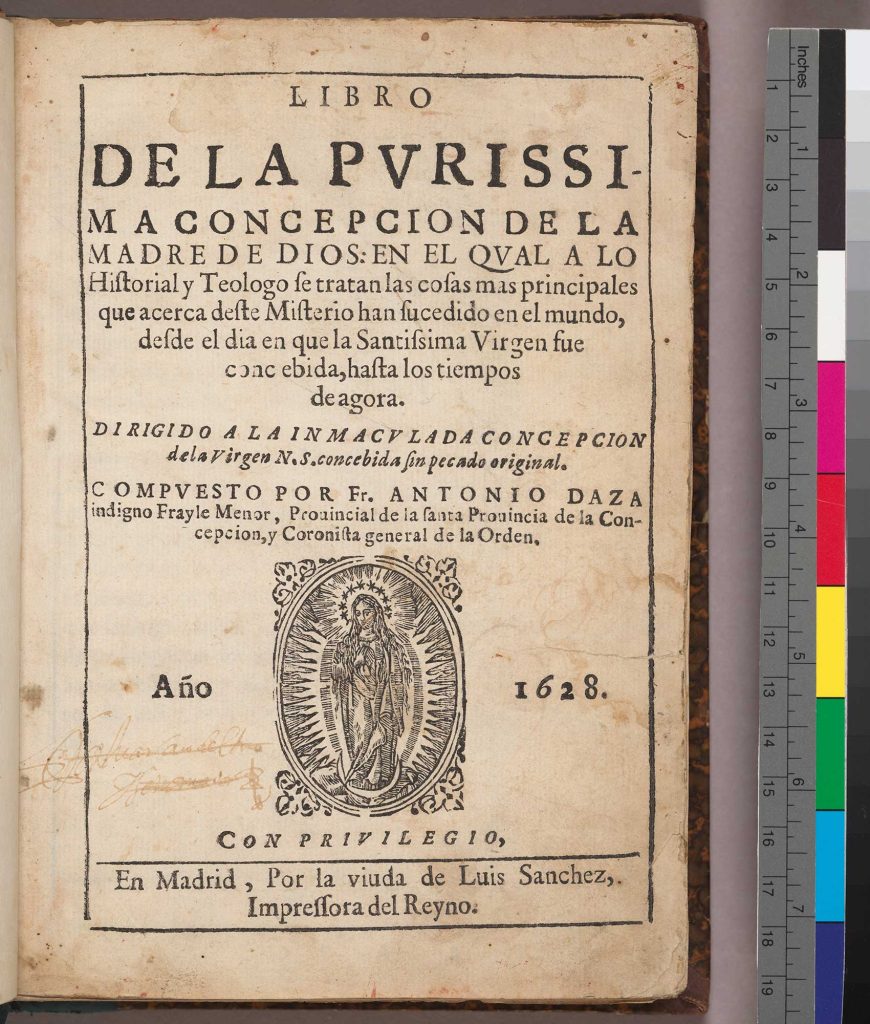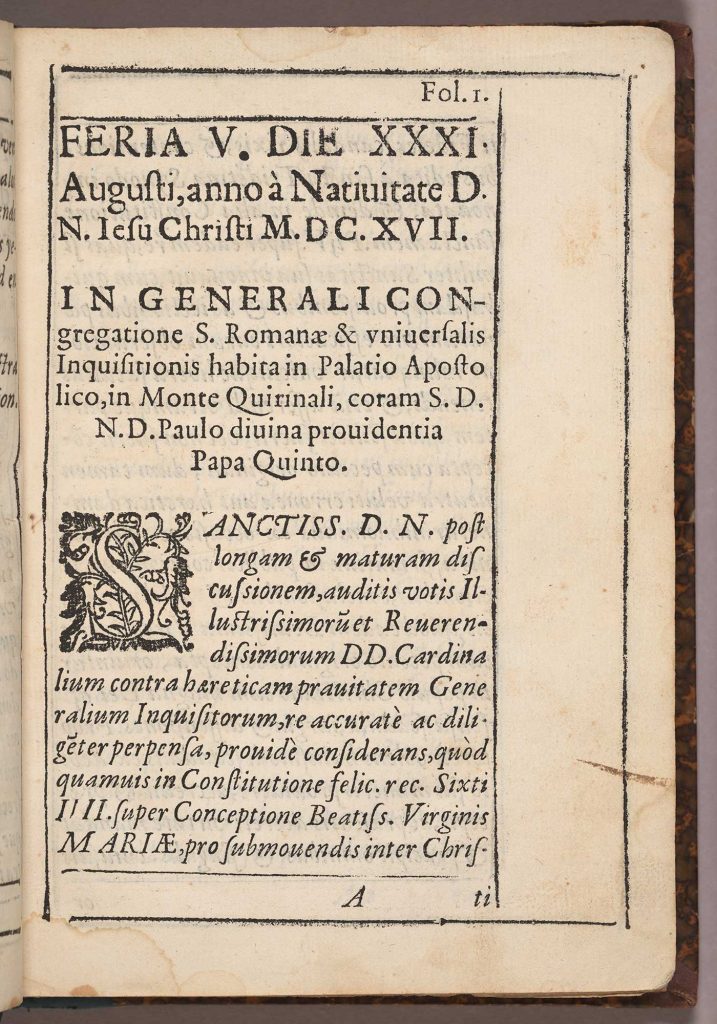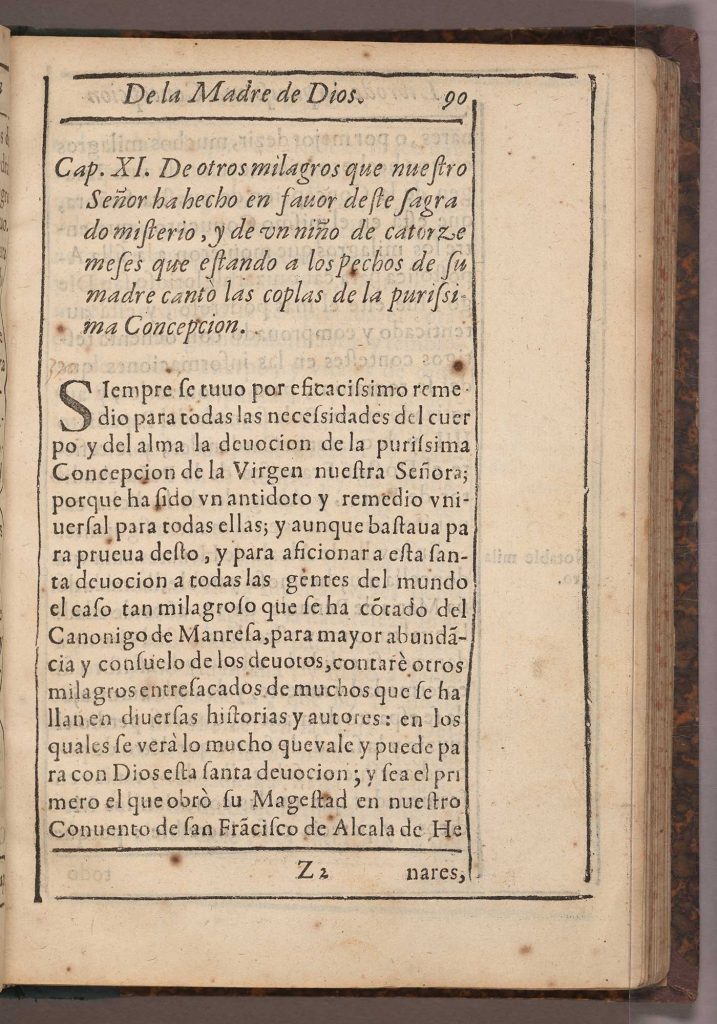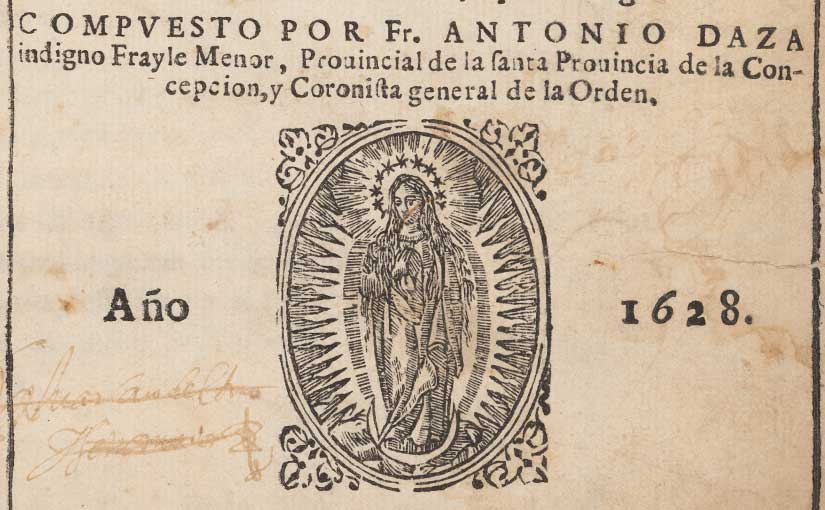by Alan Krieger, Theology and Philosophy Librarian
Hesburgh Libraries has recently acquired the second “issue” of the first edition (1621) of Antonio Daza’s Libro de la Purissima Concepcion de la Madre de Dios (Madrid, 1628), an important early printed defense of the doctrine of the Virgin Mary’s Immaculate Conception. Daza, a Spanish Regular Observant Franciscan, published this vernacular work during the height of the controversy between Franciscans and Dominicans over the orthodoxy of these views.

The Catholic Encyclopedia (v. 7, page 680) explains the disagreement:
“The Friars Minor confirmed in 1621 the election of the Immaculate Mother as patron of the order, and bound themselves by oath to teach the mystery in public and in private. The Dominicans, however, were under special obligation to follow the doctrines of St. Thomas, and the common conclusion was that St. Thomas was opposed to the Immaculate Conception. Therefore, the Dominicans asserted that the doctrine was an error against faith (John of Montesono, 1373); although they adopted the feast, they termed it persistently “Sanctificatio B. M. V.” not “Conceptio”…, until in 1622 Gregory XV abolished the term “sanctificatio”. Paul V (1617) decreed that no one should teach publicly that Mary was conceived in original sin, and Gregory XV (1622) imposed absolute silence (in scriptis et sermonibus etiam privatis) upon the adversaries of the doctrine until the Holy See should define the question.”
Daza draws on a fascinating array of evidence, including a 14-month old infant who sang the verses of the Immaculate Conception (f. 90) and the Virgin Mary’s intercession in “regular” conception and ensuring healthy births among devotees (f. 93). Chapter XIII, “De la obediencia y respeto que tienen los demonios a la inmaculada Concepcion de la Virgen; y como conjurados por la virtud deste misterio han salido de los cuerpos humanos, confessando su limpieza” (ff. 107-114) contains accounts of demoniacal possession (generally of women) cured by the intercession of the Virgin Mary; a telling feature of these exorcisms was that the demons “confessed” to Mary’s freedom from sin as they exited their hosts. The following Chapter XIV points out divine punishments imposed on those who have historically spoken against the Immaculate Conception.


We have found only 1 other North American library holding of this second issue (at the Biblioteca Nacional Mexico) and only 4 holdings worldwide.
